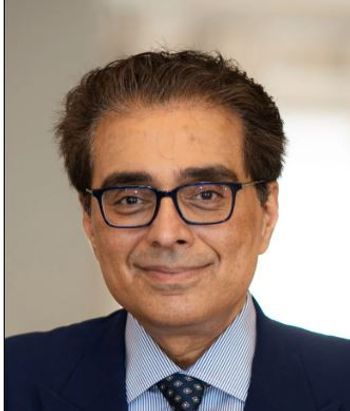
Plight of Uninsured Comes Home to Roost in Medicare
BOSTON -- Medicare may be inheriting big expenses from the lengthy ravages of medical neglect faced by uninsured Americans who had been unable to afford treatment for hypertension, diabetes, or other chronic conditions.
BOSTON, July 11-- Medicare may be inheriting big expenses from the lengthy ravages of medical neglect faced by uninsured Americans who had been unable to afford treatment for hypertension, diabetes, or other chronic conditions.
In the eight years after becoming Medicare-eligible, from ages 65 to 72, previously uninsured patients had 13% more doctor visits (P =0.04), 20% more hospitalizations (P =0.04), and tended to have 51% higher total medical expenditures (P =0.09) than previously insured patients, according to a Harvard report in the July 12 issue of the New England Journal of Medicine.
These calculations were made after adjusting for Medicare supplemental insurance and prescription drug coverage (the data were collected prior to Medicare Part D prescription drug coverage).
For 2,951 adults with four common conditions-hypertension, heart disease, diabetes, and stroke-there were significant differences in both Part B (P <0.001) and Part A (P <0.001) expenditures and in total expenditures (P =0.02).
But for those who did not have such conditions, irrespective of previous insurance status, there were no significant rises among 2,207 beneficiaries, wrote J. Michael McWilliams, M.D., of Harvard Medical School, and colleagues
Not surprisingly uninsured adults had significantly fewer doctor visits and hospitalizations before age 65 (P <0.001) and had significantly higher out-out-of-pocket medical expenditures (P <0.001) than adults who were insured before age 65.
Dr. McWilliams analyzed data from the Health and Retirement Study collected in 1992 when participants were ages 51 to 61. Those data were updated biennially through 2004.
They used propensity score methods to compared health care use and expenditures for previously insured and uninsured adults and adjusted for differences in supplemental and prescription drug coverage after age 65.
Those who were covered by Medicaid or other publicly funded coverage before age 65 were excluded from the sample.
Census data show that 46.6 million Americans were uninsured in 2005, an increase of 1.3 million from the number of uninsured in 2004 (45.3 million) and there is no indication that this trend will slow in the near future, said the investigators. Likewise, the number of Americans 65 and older is expected to increase to more than 70 million-up from about 35 million-by 2030.
These parallel demographics pose a significant public policy burden as Medicare will be faced with the challenge of providing health insurance to more beneficiaries, many of whom are likely to require more intensive costlier care, the authors concluded.
Among the findings:
- Those who were uninsured before Medicare were less likely to have Medicare supplemental insurance (69.7% versus 83.8% P <0.001) or prescription drug coverage (70.5% versus 86.6% P <0.001 [data from before Medicare Part D]).
- Previously uninsured beneficiaries were about 30% more likely to report health declines before the age of 65 (adjusted odds ratio 1.31; 95% CI, 1.11-1.56 P =0.002).
- Adults who reported a health decline averaged 23.4% more doctors' visits (P <0.001) and 37% more hospitalizations (P <0.001) after age 65.
The authors noted that the study was limited by its observational design, which did not allow "definitive conclusions about the causal effects of acquiring health insurance on subsequent reductions in health care use or expenditures."
And because health care use and expenditures were self-reported, they could not be validated, although self-reported doctor visits and hospital admissions were "highly correlated with actual use of services, as shown by administrative claims and medical records."
Dr. McWilliams and colleagues concluded that "providing health insurance coverage for uninsured near-elderly adults may improve their health outcomes and reduce their health care use and spending after age 65. Particularly for those with cardiovascular disease or diabetes, these benefits may be substantial and may partially offset the costs of expanding coverage."
Newsletter
Enhance your clinical practice with the Patient Care newsletter, offering the latest evidence-based guidelines, diagnostic insights, and treatment strategies for primary care physicians.































































































































































































































































































































